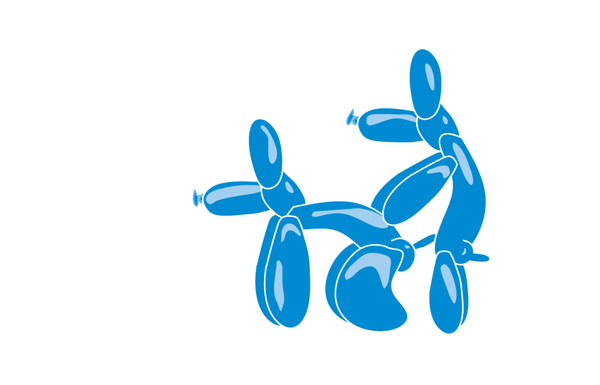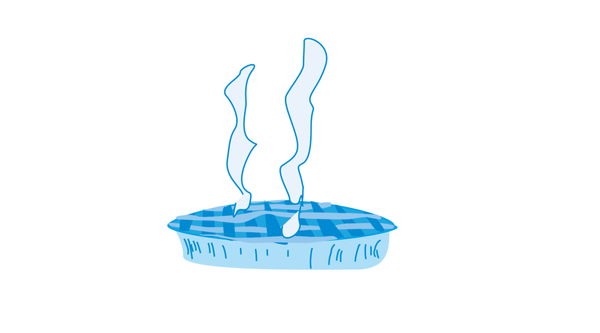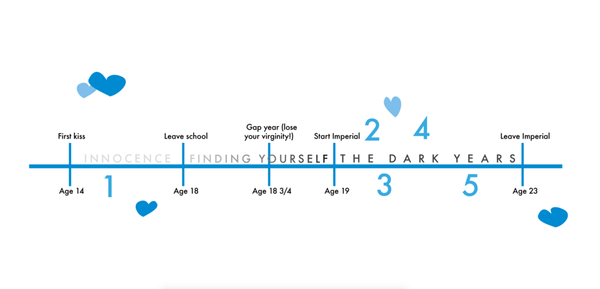Let’s talk about Drugs #realtalk
David Charchoglyan discusses the discrepancy behind drug science and drug policy, by using the science and culture of MDMA as a case study
Do you know why some drugs are called ‘Drugs’ with a capital D? Or why your school was so eager to drill into you that some things are bad no-questions-asked-because-I-said-so during those insufferable PSHE lessons? Why some substances are kept completely out of our reach and have a seven year sentence attached, while others have the privileged liberty of being sought and found not just at the chemist’s, but even at the off-license? Let’s scrutinise rationally, calmly and scientifically on the question of why drugs are such a big deal, and why everyone appears to believe what they do about them. By examining the drug MDMA and its potential utility. Let’s do away with the lies for good, and uncover the truth, shall we?
MDMA was synthesised by Merck in 1914 and was largely left untouched until psychotherapists in the 1970’s began applying this agent, along with other recreational substances such as LSD, as a compliment to normal talking therapies for helping treat patients with depression, anxiety and a host of other psychiatric problems. By the early 80’s, the drug was used an estimated 500,000 times in therapy. Reports of toxicity or abject therapeutic failure were non-existent, though rigorous studies as to its efficacy were in the same quandary. The drug eventually leaked from the therapist’s couched and permeated into the emerging youth culture of raving nightclubs. An abyss of scientific ignorance about the risks and benefits of the drug, coupled to widespread recreational use and controversial cases of death associated with the drug, subsequently led to its ban. It was labelled a Class A substance, one “of minimal to no medical use”, joining the ranks of cocaine, heroine and meth. This stands true in the majority of countries in the world, since most drug policies follow the guidance of the UN Single Convention on Drugs.
What has happened since the fateful events of the 80s? It is still widely used – more than 60 million tablets of Ecstasy are consumed annually in the UK alone. It is still a Class A drug, carrying a hefty seven year imprisonment for possession, and free from governmental acknowledgement of any potential therapeutic use. Something has changed however. The past decade has seen a heroic effort to recommence its safety and efficacy testing, along with its utilisation in small cohorts of psychiatric patients with severe treatment-resistant and debilitating conditions like post-traumatic stress disorder (PTSD). It has, and I speak free of hyperbole here, demonstrated the magic-bullet-like properties of an antibiotic, and the clinical safety of a teacake. Study after study is building on the evidential base that it appears to be one of the most promising psychotherapeutic tools ever found, with a myriad of potential uses in everything from social anxiety to end-of-life care. The caveat here is of course that pure controlled-dosage MDMA used in a safe clinical setting could not be more different to poly-drug Ecstasy use in a nightclub. With MDMA, not a single significant adverse effect has occurred in any of the 1133 patients so far tested, and many large epidemiological studies are demonstrating that its risks are marginal taken as an isolated compound. One large epidemiological study concluded that having two pure MDMA tablets is the equivalent of having 1.5 cigarettes in standard measures of adversity for your health. Moreover, much of the older research on the safety of MDMA that was used to inform our drug policies is now under heavy criticism for having poor scientific rigour, significant bias, and tenuous, or even purposefully inflammatory, conclusions. In the words of the famous Professor Nutt at Imperial who spearheads research in this field “all drugs can be harmful under specific circumstances” and MDMA is truly no exception – but in light of new rigorous evidence it appears that its therapeutic window appears to be far away from its toxic window, enshrining its status as one of the safest psychiatric drugs ever to be tested.
MDMA’s recreational use, in the form of Ecstasy, is an area of much speculation and concern, however. Ecstasy contains very variable amounts of MDMA (often none at all) and is usually mixed with other substances such as methamphetamines . Ecstasy when used on the streets has been linked to deaths from dehydration, over-hydration, seizures and life-threatening high blood pressure. Roughly 20 people die from it annually. There is some consensus that very prolonged, heavy and frequent use can have some unpleasant effects – although such a modicum of application is seldom seen, as its addictive capacity is very low. The risks observed are also confounded by the fact that Ecstasy use is also frequently associated with the use of other drugs, such as cocaine, which is known cause serious health problems. Taken in isolation and in moderation, however, some indicators of the relative safety of Ecstasy include its listing as the 17th least damaging drug of those commonly taken the UK (compared to alcohol which came top, and tobacco which came 6th). It’s risk to others, and to society generally, was virtually non-existent, given the nature of the drug. One study showed the risk of death per Ecstasy tablet, even in its impure form, is one in two to four million, indeed usually as a result of either the tablet’s impurity, irresponsible and excessive drug use, or ingestion in a dangerous environment often alongside other drugs. It appears the risks of even impure MDMA use, in the form of Ecstasy, are very small. Indeed Nutt even wrote a controversial paper comparing the risk of horse-riding (with 100 deaths annually) to ecstasy use demonstrating the absurdity of our unscientific and often hypocritical approach to what at bottom appears to be a question of private leisure. It seems we are accumulating more evidence in favour of its use, and against its Class A classification – but an important and necessary acknowledgement to make is surely that its use has to be in the correct context and for the correct population, or else the risks do truly tally up, and the benefits diminish.
Much obscurantism and poor science encapsulates the discussion of MDMA, and indeed many false inferences are made upon it by drawing on the behavioural and sociocultural practices inherent to Ecstasy use, which as we have seen is quite different. A false deduction is recurrently made that the evidence of its (marginal) risk when used on the streets acts as evidence for the ineligibility of the provision of MDMA as a pure drug in a controlled environment under the supervision of a licensed medical practitioner. It is the equivalent of banning painkiller use by doctors because there are addicts that abuse heroine. Worse yet, it is banning their scientific research. The debate and inquiry is shut down before it can even begin. Thankfully, such an infarct to reason is in gentle recovery, as the enormous chasm between the practices of therapeutic MDMA use and recreational ecstasy use are under continued exegesis.
MDMA works by significantly increasing serotonin levels in your brain – the chemical responsible for positive feelings and intonations. It immerses people in feeling of ‘love, connection and trust’ and is generally a highly positive experience, though some feelings of anxiety and restless are documented. Most notably, it fosters a shift towards openness, emotional candidness, and introspection. This allows people to talk honestly, and indeed positively, about themselves, their lives, their relationships, and the world at large, free of the tinted glasses of neuroses and self-consciousness that usually encumber us. It is not a magic bullet for solving the problems of the mind in itself, but is instead seen as a ‘catalyst’ that greatly amplifies the power of established talking therapies. MDMA’s effects are distinct from other substances, in that it does not distort cognition or perceptiveness, leaving the user perfectly aware of reality and clear in thought and consciousness. In the absence of defensive conditioning, anxiety and fear, a seamless platform for trust and open communication is established – this, indeed, is usually one of the biggest difficulties in therapy, whilst also being one of the biggest predictors of therapeutic success. When this open channel of communication is grounded, a well trained therapist can work with a patient to facilitate an introspective and reconciliatory analysis of personal issues, nurturing an alternate perception of certain unpleasant experiences or thoughts.
Unlike the drug’s eight hour effect, the revelations are not fleeting. It may sound like wishful thinking to some, but numerous studies are now demonstrating this to be perfectly true. For example, five years after follow up of PTSD treatment with MDMA in a rigorous study performed in 2011, it was shown that 85% of patients were successfully and permanently treated after just three doses, leaving many free of the disease, along with the burden of medication and therapy. Compare this to the current ‘gold standard’ therapies for PTSD, with poor uptake and terrible efficacy, and they begin to look like constructions of pseudo-scientific ignorance from the Iron Age.
But it does not begin or end with PTSD, or even MDMA. Psychiatrist Dr Ben Sessa, a huge advocate of adjunctive psychedelic use in therapy, has said that “despite 100 years of modern psychiatry the specter of trauma continues to underpin the clinical presentation for most chronic mental health disorders.” There is much discussion of MDMA’s potential benefit for a myriad of serious mental health conditions, as well as for the treatment of less severe but nonetheless unpleasant problems such as generalised anxiety disorder. No doubt the confines of its applicability will only be expanded further as science progress.
Psychedelics perfectly elucidate an interminable encounter between science and policy, and a gap between the evidence and the action. But how does such a predicament arise? A core component has to be a conflict of values. The scientific relentlessness for truth, inextricably entangled with disdain for non-evidence-based, non-deductive, logic-skewing, biased decisions (in other words, bullshit) appears to be in direct conflict with much of politics, for obvious reasons. Amplify the depravities we’re in once the vermin of irrational thought are demonstrably and unfailingly applied for decades to shape our world, when society not only endorses such mistakes but feels positively smug about them, and when much of the scientific community itself is infiltrated by the nonsense of a brain-washed mob. Finally, compound this by making millions of lives depend on our answers to these questions, and there you have it – a zero-sum battle between reason and irrationality, from which only one victor can emerge, and indeed must emerge. Many of our current problems exists and persist under this ignoble climate – but perhaps one of the most salient examples remains the question of recreational substances and their role in society.
We still exist in the midst of an age-old gridlock, but several years of relentless study, jaw-dropping results, and public engagement, have infiltrated the frontiers of prejudice and misinformation about MDMA, and commenced dispersing the unfounded. Though the process has been slow, we are now living through a psychedelic renaissance. In the words of Sessa “substances such as MDMA − as well as other psychedelic drugs including psilocybin, ketamine and LSD − could hold significant potential as adjuncts to traditional treatment models.” When 16 million people in the UK alone will suffer from a debilitating mental health problem, things are in desperate need of change, as millions of minds, and indeed millions of lives, depend on it.
The research is beginning to reflect this reality, with many more studies under way. This situation, alongside numerous others, also highlights the imperative of disseminating an understanding of the scientific method to all, empowering normal people with the ability to discern good evidence from bad evidence, the capacity to equate benefits and risks, and the power to observe the workings of politicians and scientists alike with a critical eye – in essence, a self-owned filter for truth. The scheduling of MDMA, along with many other potentially therapeutic drugs, as Class A substances, has discouraged and obfuscated systematic clinical research in this area, and hindered the application of treatments that are showing significant, indeed, mind-blowing, potential to improve many lives at small costs.This is a question not just of science and truth, but one of morality. It appears that, slowly, logic and compassion are subjugating taboo, ignorance and vested interests, and in so graceful a way as only demonstrable by the beauty of science. The only question is – when will the policy catch on?








